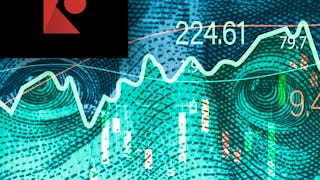This course offers a comprehensive introduction to the fundamental principles of economics, with a balanced focus on both microeconomic and macroeconomic perspectives essential for business decision-making. Students will gain an understanding of how individual households and firms make choices regarding consumption, production, and pricing under conditions of scarcity in the study of Microeconomics. Key topics include demand and supply analysis, market structures, cost and revenue concepts, and the behavior of firms under various competitive environments.
通过 Coursera Plus 解锁访问 10,000 多门课程。开始 7 天免费试用。


您将学到什么
Master core economic concepts and their application. Explore consumer behavior, markets, and key indicators. Learn to analyze economic trends.
您将获得的技能
要了解的详细信息

添加到您的领英档案
June 2025
44 项作业
了解顶级公司的员工如何掌握热门技能

该课程共有17个模块
In this course you'll learn the basics of both Microeconomics and Macroeconomics. In Microeconomics you will learn how the households and the firms make economic decisions. In macroeconomics, you will learn about the economy as a whole. In particular, the major economic indicators, such as GDP, inflation and unemployment. This module introduces you to the main tenets of economic decision-making, including scarcity, choice, and opportunity cost. The module provides in-depth knowledge about the concepts of demand and supply in an economy. You will understand the relationship between demand and price through the law of demand and the relationship between supply and price through the law of supply. You will also learn about the non-price determinants of demand and supply. Finally, you will learn how the market arrives at equilibrium, meaning that supply and demand are brought into balance. The module discusses how the shifts in demand and supply affect the market equilibrium.
涵盖的内容
6个视频3篇阅读材料4个作业1个讨论话题
In this module, you will learn about the price responsiveness of demand, better known as price elasticity of demand. You will also learn about the factors that cause price elasticity of demand to change. The module will help you understand what makes one good price-elastic and another good price-inelastic and what kind of pricing strategy is best for producers, given the price elasticity of a good. Further, you will learn other elasticity concepts, including price elasticity of supply, income elasticity of demand, and cross-price elasticity of demand. Finally, you will learn about real-life examples of elasticity and how the concept of elasticity can be used as an analytical tool.
涵盖的内容
4个视频3个作业1个讨论话题
In this module, you will learn about the concepts of profit and loss and how they are calculated. This module will help you to understand the difference between revenue maximization and profit maximization. You will learn about the concept of production and the different inputs or factors of production that are used by firms. In addition, the module explains the production function of the firm in the short run and in the long run. You will learn about how the term “cost” is used in economics as opposed to its everyday usage, and the difference between costs in the short and long run. Finally, you will learn about some real-life examples of costs and production in the short and long run.
涵盖的内容
4个视频1篇阅读材料3个作业
In this module, you will be introduced to the different market structures and gain in-depth knowledge about the characteristics of a perfectly competitive market. You will understand how a firm makes its price and output decisions in perfect competition and how profit and loss can be determined in the short run. You will learn how a firm decides when it should continue its production or when it should shut down, and when the firm breaks even. You will also learn about the long-run equilibrium in a perfectly competitive market.
涵盖的内容
4个视频4个作业1个讨论话题
涵盖的内容
1个作业
In this module, you will learn about the nature of monopoly and how it is created. The module highlights the key differences between the two extremes of the market structures, which are perfect competition and monopoly. You will learn about the demand curve, marginal revenue curve, and the profit-maximizing conditions in monopoly. In addition, you will learn about price discrimination and its different types and understand why the firms charge different prices for the same good. Finally, you will learn about real-life examples of monopoly.
涵盖的内容
4个视频1篇阅读材料3个作业
In this module, you will learn about the two imperfectly competitive market structures, monopolistic competition and oligopoly. You will learn about the characteristics of a monopolistically competitive market, including the concept of product differentiation. In addition, you will learn about the equilibrium condition for a monopolistic competitor in the short run and in the long run. About oligopoly, the module covers its characteristics and principles. The module introduces the concept of a cartel as an example of oligopoly. Further, this module compares the different market structures and helps you understand that the market structures differ based on the intensity of competition. Market concentration is usually used as a representative of the intensity of market. You will learn about Herfindahl-Hirschman Index (HHI) as a tool to calculate market concentration.
涵盖的内容
4个视频3个作业
涵盖的内容
1个作业
This module is focused on understanding the strategic interaction among firms. You will learn about game theory as a tool to illustrate strategic interaction. The application of game theory in economics helps to interpret various decisions in market structures and behavior of the firms in different market structures such as oligopoly; for example, why do firms tend to collude in some markets and compete aggressively in others. In addition, you will learn about the concept of dominant strategy and the meaning of equilibrium in dominant strategy. In some cases, one or more players do not have dominant strategy. In such cases, a general equilibrium concept, such as Nash equilibrium, can be used. In this module, you will learn about the concept of Nash equilibrium and compare it with dominant strategy. Finally, you will learn about the application of game theory, dominant strategy, and Nash equilibrium in real life.
涵盖的内容
4个视频4篇阅读材料3个作业
This module introduces you to macroeconomics and highlights the differences between microeconomics and macroeconomics. You will learn about the key concepts of macroeconomics, including a country’s overall output, overall labor of a country, and average Consumer Price Index (CPI). You will learn how to use, visualize, and analyze macroeconomic data to understand the state of an economy. You will understand the meaning and concept of Gross Domestic Product (GDP) and how GDP measures the flow of money between firms and households. In addition, you will learn about the components and calculation of GDP. Finally, the module critically analyzes the limitations of GDP as a measure of economic well-being.
涵盖的内容
5个视频4篇阅读材料4个作业
In this module, you will learn about the concept of consumer price index (CPI) and how it is used as an indicator of inflation. You will learn how to calculate CPI. The module also focuses on the limitations of CPI and helps you understand why CPI is not the perfect measure of cost of living. Economists use both the Gross Domestic Product (GDP) deflator and CPI to compute the inflation rate. The module highlights the difference between GDP deflator and CPI and helps you understand why the two measures of inflation may diverge. In this module, you will learn about the supply-demand model of the financial system and how financial markets coordinate the economy’s savings and investment. Finally, you will learn about the concept of unemployment and understand the various types of unemployment.
涵盖的内容
7个视频3篇阅读材料4个作业
This module focuses on an important question of economics: Why do countries remain poor? The module will help you analyze the variation in economic growth across countries. You will learn about the concept of productivity and understand its determinants. To understand what makes a country grow fast in the long run, the module focuses on the famous Solow growth model. The module will help you understand the role of technology, population growth, and institutions in the growth of a country. Finally, the module will present a story about the growth that discusses how and when humanity started experiencing long-sustained growth and recording the relevant data.
涵盖的内容
4个视频2篇阅读材料3个作业1个讨论话题
涵盖的内容
1个作业
This module focuses on the short-term fluctuations in the economy, which can be explained through the aggregate demand – aggregate supply framework. The aggregate demand (AD) curve depicts the quantity of all goods and services demanded in an economy at any price level. The module will help you to understand the concept of AD curve and why AD curve is downward sloping. The aggregate supply (AS) curve depicts the total quantity of goods and services that firms sell at any given price level. In the module, you will analyze the aggregate supply curve in the short run and in the long run. The module explains the two basic causes of short-run economic fluctuations, shifts in aggregate demand, and shifts in aggregate supply.
涵盖的内容
4个视频2篇阅读材料3个作业1个讨论话题
This module focuses on an open economy, which is an economy that interacts with other economies. You will learn the basic concepts of an open economy, including exports, imports, trade surplus, and trade deficit. You will learn how residents of open economies participate in world financial markets. The module explains the relationship between capital flows and good flows in an open economy. In addition, you will understand how saving and investment are related to the international flow of goods and capital. Furthermore, you will learn about the two important international prices, the nominal exchange rate and real exchange rate. Finally, you will learn about some of the policy dimensions of exchange rates and the related problems.
涵盖的内容
5个视频2篇阅读材料3个作业
涵盖的内容
1个作业
This module explores how global forces shape local markets and poverty dynamics, examines strategies to mitigate demand shocks, and highlights how firms can drive sustainable development. Students will develop insights into policies, solutions, and ethical leadership for inclusive growth.
涵盖的内容
6个视频1篇阅读材料
攻读学位
课程 是 O.P. Jindal Global University提供的以下学位课程的一部分。如果您被录取并注册,您已完成的课程可计入您的学位学习,您的学习进度也可随之转移。
位教师


从 Economics 浏览更多内容
 状态:免费试用
状态:免费试用Interactive Brokers
 状态:预览
状态:预览O.P. Jindal Global University
 状态:免费试用
状态:免费试用Fundação Instituto de Administração
 状态:预览
状态:预览O.P. Jindal Global University
人们为什么选择 Coursera 来帮助自己实现职业发展




常见问题
To access the course materials, assignments and to earn a Certificate, you will need to purchase the Certificate experience when you enroll in a course. You can try a Free Trial instead, or apply for Financial Aid. The course may offer 'Full Course, No Certificate' instead. This option lets you see all course materials, submit required assessments, and get a final grade. This also means that you will not be able to purchase a Certificate experience.
When you purchase a Certificate you get access to all course materials, including graded assignments. Upon completing the course, your electronic Certificate will be added to your Accomplishments page - from there, you can print your Certificate or add it to your LinkedIn profile.
Yes. In select learning programs, you can apply for financial aid or a scholarship if you can’t afford the enrollment fee. If fin aid or scholarship is available for your learning program selection, you’ll find a link to apply on the description page.
更多问题
提供助学金,



